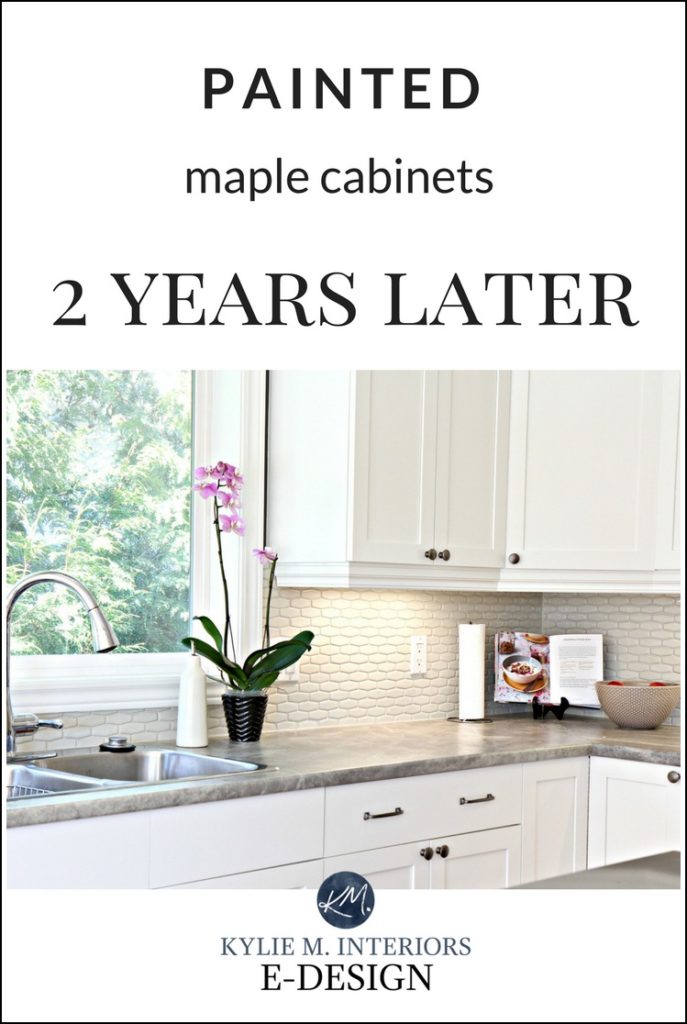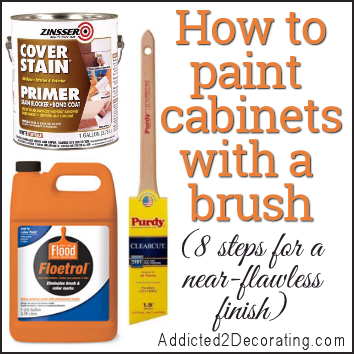
If you have a pneumatic air compressor, use high-pressure air to blow the dust out of crevices or molding details. Clean down the locations to be painted with a tack cloth to pick up any staying sanding residue. Use an even coat of primer-sealer to all surfaces to ensure a well-bonded surface coat.

Another advantage to a primer-sealer is that it offers a great base for semigloss, water-based paint. High-gloss enamel paint was as soon as the preferred surface for cooking area cabinets because it resists stains and water and is easily cleaned up, but today's water-based finishes are easier to deal with and supply a similarly long lasting finish (Cabinet Painting 28210).
This allows you to work quickly in the less important areas, and allows you to see and correct any drips or smudges on the most visible areas - Cabinet Painting Contractors 28213. Next, paint the cabinet doors and drawer fronts, in addition to any different wood pieces or moldings. If these parts have raised or routed features, be sure to flow the paint into crevices and corners, but don't enable it to build up in these areas.
Thin coats leave less noticeable brushstrokes and dry more rapidly. Don't lay the finish on heavily and don't strain the brush too numerous brush strokes will produce air bubbles in the surface, leaving bumps and pits when it dries - Cabinet Painting 28217. Permit the paint to dry for at least 4 hours in between coats.
2 coats of quality paint are usually sufficient, but you may wish to include a 3rd coat because kitchen area cabinets take lots of punishment from cooking heat and day-to-day usage, and wood surface areas require all the defense they can get.
How 8 Quick Tips To Paint Furniture And Avoid Brush Cabinet Painters 28226 Strokes can Save You Time, Cabinet Painting 28277 Stress, Cabinet Painters Charlotte NC and Money.
Want to speed up the project? Choose a fast-drying primer for the first coat. Check out the label for info on recoating time and to make sure the primer is compatible with the paint you're planning to use (Cabinet Painting 28215). Pro Suggestion: Utilize an enamel underbody guide. Water-based paint has actually come a long method, and some premier acrylic alkyd hybrids rival oil-based paint.
Oil-based paint dries gradually and levels well. This gives you more working time and fewer brush marks. Likewise, when they're dry, oil-based guides like Benjamin Moore Clean Slate Enamel Underbody sand easily to offer a best base for your surface coat. Cabinet Painting 28207.
3 out of 5 Moderate Though it's just paint, getting the brushwork right requires time and persistence. Drill/driver Paint scraper Putty knife Store vacuum with drywall-dust filter Random orbit sander Nylon-Polyester chisel-tip Paint brush - 2 1/2- Inch Security goggles respirator fitted with natural vapor cylinders Chemical-resistant gloves If your kitchen area cabinets are solid however dated and dark, a fresh coat of paint can go a long way toward transforming the space without draining your savings account - Cabinet Painters 28227.
" You do not require to spray to get a smooth finish," states painting professional John Dee, who has actually worked on a variety of This Old House TV jobs. He typically brush-paints cabinets anyway because it offers him more control and prevents the threat of paint spray winding up where it's not wanted.
However the outcome is a resilient, glass-smooth surface that's the equivalent of anything from a spray weapon. "You just require to utilize the very best materials and make the effort to sand and do the brushwork right," Dee says. Keep reading for our pointers for painting kitchen area cabinets. Prior to starting a cooking area paint task, empty the cabinets, clear off the counters, and eliminate freestanding home appliances.
The Ultimate Guide To Step-by-step How To Paint Kitchen Cabinets Like A Pro (And ...

Tape rosin paper over the countertops and floor covering, and tape plastic sheeting over the backsplash, windows, repaired devices, and interior entrances (to safeguard the rest of the house from dust and fumes). Mask off the wall around the cabinets. Finally, established a worktable for painting doors, drawers, and racks.
" Old cabinets are covered with everything from hand oils to greasy smoke residue to scared gravy," states Dee. "You have actually got to get all that off or the paint will not stick." Back out the hinge screws from the cabinet frame and remove the doors. Working methodically from left to right, leading to bottom, label every one with a numbered piece of tape.
Reserve the shelf-hanging hardware. At your worktable, get rid of the pulls and hinges and conserve what's being reused. On the doors, transfer the number from the tape to the exposed wood under one hinge. Cover it with fresh tape. Open the windows for ventilation and put on safety gear. Scrub down all of the face frames, doors, drawer fronts, and shelving with an abrasive pad dipped in liquid deglosser.